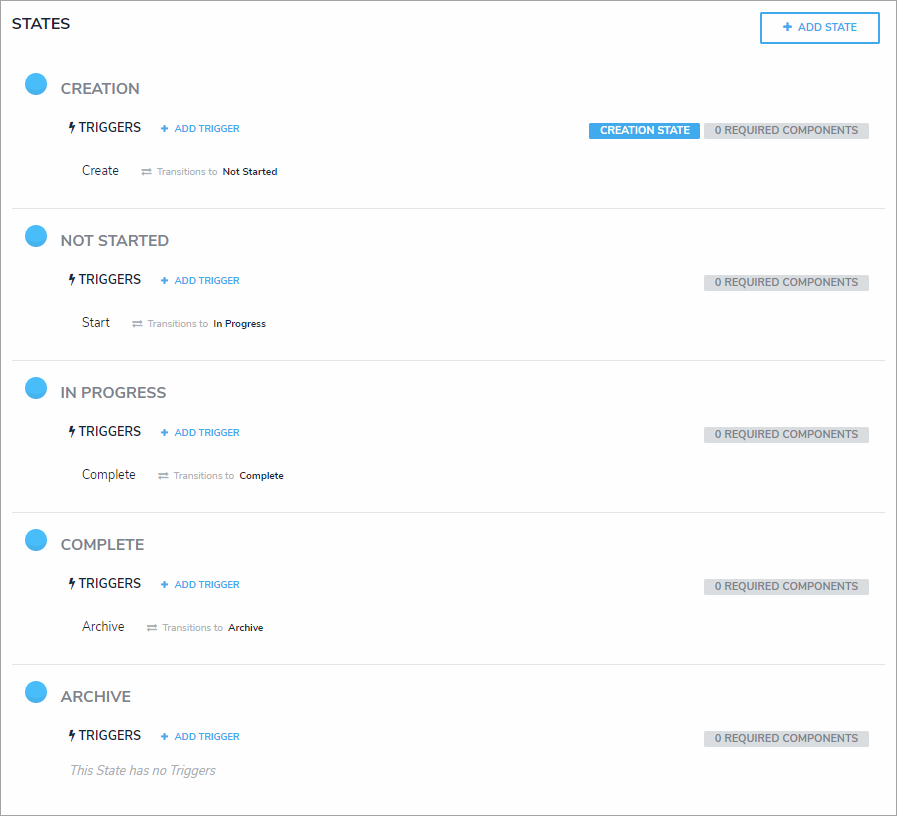Because objects in an assessment may require different processes depending on the assessment type (e.g., Audit versus ERM), administrators can configure unique workflows for object types added to assessments.
While assessment types can only have one workflow, the object types added to an assessment can have multiple. Additional workflows can only be created in the Configuration tab on the Edit Assessment page, however, once a workflow is created, it can be used for the object type on any other assessments (if that object type has been added to the data definition). The states in those additional workflows can be used to filter the objects displayed in views, data visualizations, or search results.
The primary workflow created for each object type outside of an assessment is identified in the Configuration tab as [Object Type Name] (Library). When you create a new workflow for an object type from the Edit Assessment page, you can reuse that workflow in other assessments, views, data visualization filters and parameters, and searches. Reusing previously created assessment workflows is useful when an object type has similar processes across more than one assessment. For example, if the Control object type was used in the Control Self-Assessment, an administrator could select that assessment's workflow when Control was used in the Audit assessment.
Each new assessment and object type is created with an automatically generated workflow that includes the following states, triggers, and transitions that can be edited, deleted, or replaced (except Creation):
- Creation: Contains a Create button trigger that transitions the object to the Not Started state. This state cannot be deleted nor can its name or color be edited, however, the trigger can be edited or replaced as needed.
- Not Started: Contains a Start button trigger that transitions the object to the In Progress state.
- In Progress: Contains a Complete button trigger that transitions the object to the Complete state.
- Complete: Contains an Archive button trigger that transitions the object to the Archive state.
- Archive: This state contains no triggers or transitions.
 The standard workflow that's created with each new assessment and object type.
The standard workflow that's created with each new assessment and object type.
The object types available in the Configuration tab on the Edit Assessment page are populated based on the data definition selected when creating the new assessment. From this tab, you can also specify whether these object types' data will be cloned or be used as reference data only, and if other assessments can reuse this data. Note that you cannot create or configure workflows for object types used as reference data in assessments. For more information, see the Assessment Instances section.
